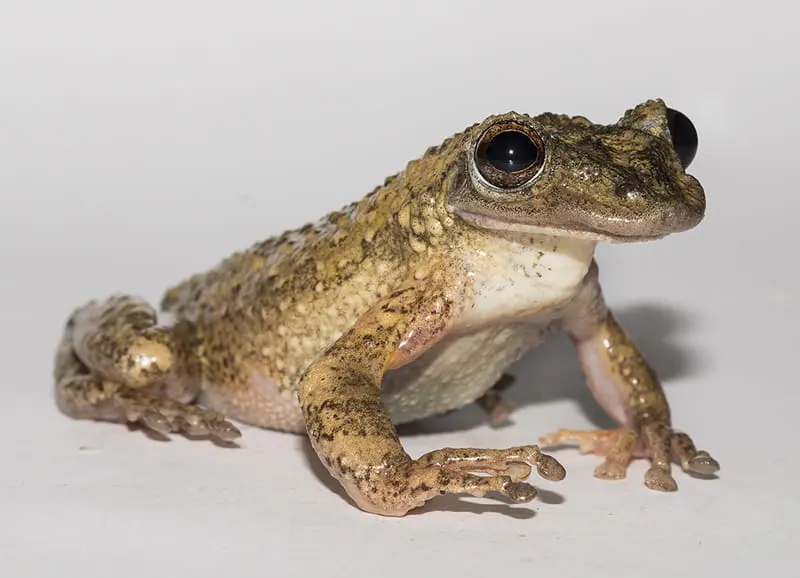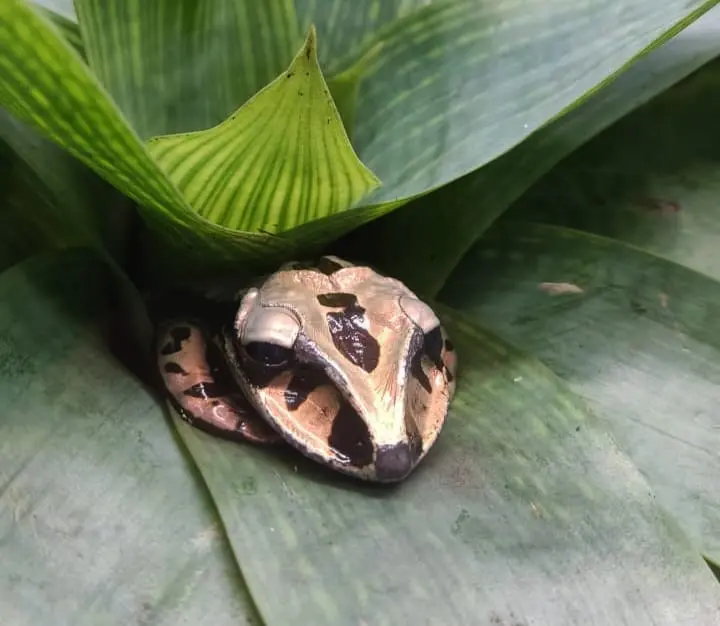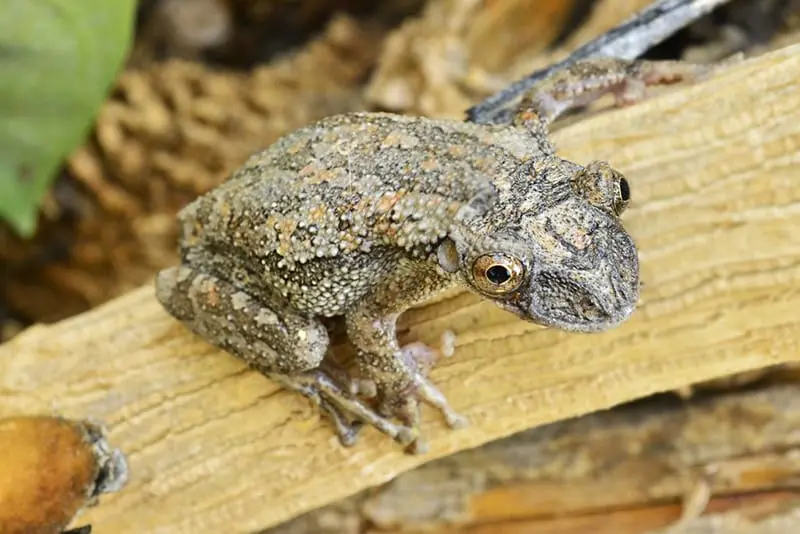The venomous casque-headed frog
There is a great diversity of poisonous animals, but that doesn’t mean they are all dangerous. Animals such as the puffer fish, the pitohui bird, and many anurans (frogs , toads , and tree frogs ) produce internal toxins, but are unable to expel the poison themselves.
Anurans, for example, can only release their toxins when an external force (such as the animal’s mouth or a person’s hand) presses on the subcutaneous poison glands scattered throughout their bodies - such animals are considered poisonous but not venomous.
Venomous animals are those that contain mechanisms capable of transferring the toxins produced in their bodies to their prey or potential predator. This is the case with snakes with their needle-like teeth, scorpions, bees with their stings, and fish such as lionfish, angelfish , or rays that have toxins in the spines of their fins.
Thus, until recently, no anuran was considered poisonous.

However, in 2015, Dr. Carlos Jared, a researcher at the Butantan Institute’s Cell Biology Laboratory, discovered a species of venomous anuran when he was accidentally poked by a casque-headed tree frog (Corythomantis Greeningi). A few years later, a second species of casque-head tree frog already known (Aparasphenodon brunoi), was also identified as venomous.
Characteristics
These casque-headed tree frog measure 5 to 8.5 cm (2 to 3 in) — is generally larger. Both are endemic to Brazil; while C. greeningi lives in semi-arid environments of the Caatinga, A. brunoi lives in the Atlantic Forest, from southern Bahia to northern São Paulo, mainly in areas of restinga where bromeliads are abundant, the main shelter of these frogs.
They use a tactic called “phragmosis,” which is any method by which an animal defends itself in its burrow by using its own body as a barrier. Casque-headed tree frogs have an ossified skull filled with bony, barb-like spines attached to subcutaneous venom glands.
This characteristic makes them perfect for use as shields or covers when entering small breaches on their backs. In this way, they use their flattened heads and long, pointed snouts to protect their bodies from any predators that try to capture them in their shelters.1

In addition, the casque-headed tree frog possesses a second unique ability among anurans: it can move its head both laterally and vertically to deliver blows, causing its spines to act as channelizers when pressed, transferring toxins from its subcutaneous venom glands to the predator’s skin, injecting it with venom2.
In addition to its defensive role, the venom also creates a learning method, causing its predators, upon suffering the effects of these toxins, to learn to avoid these tree frogs in future encounters.
When stabbed by the C. greeningi tree frog, Dr. Carlos Jared reported severe pain throughout his arm, and with no medical attention available nearby, the symptoms continued for five hours! Further analysis revealed that the venom can also cause prolonged swelling, as well as some necrotizing activity and a high degree of toxicity. Laboratory research on mice has also shown that the effects of Casque-headed tree frog venom can persist for up to 96 hours in these animals.1
Nevertheless, the venom produced by C. greeningi is twice as lethal as that of a jararaca, and that produced by A. brunoi is 25 times more lethal. Although C. greeningi does not have as potent a venom, its spines are larger, allowing for a larger release of venom compared to A. brunoi. Even so, during venom insertion, both are unable to inject more than a few milligrams, so cases of accidents to humans are rare.
There are other amphibians that probably should be considered poisonous, such as certain salamanders (_Echinotriton and Pleurodeles) with ribs that pierce their skin releasing venom glands and other tree frogs with spines in the head region (Diaglena spatulata, Anotheca spinosa and Polypedates ranwellai)). However, information on the toxicity of their skin secretions is still lacking, and more studies are needed before classifying them in such a way. It is probable that venomous amphibians are more toxic and common than previously assumed.2
Usefulness of venom for humans

Natural toxins have been used as medicines for hundreds of years. Currently, research on toxins of animal origin has contributed greatly to the understanding of vascular problems, inflammatory processes, allergic reactions, pain mechanisms, asthma, among others.
The venoms of snakes, for example, have been useful in the treatment of various vascular and circulatory diseases and in postoperative healing;3 the toxin of the cone snail can be used to create anticonvulsant and analgesic remedies;4 in the case of the gila monster lizard, the toxic components of its saliva can be used to treat diabetes.
The toxins of the helmeted tree frog mentioned here are also included in the list of poisons that can be beneficial to humans. After laboratory analysis, compounds with possible anti-tumor activity have been identified. Due to the resistance of some tumors to therapies, the search for new antitumor drugs is increasing. At the same time, many poisonous compounds of natural origin have been discovered, potentially offering new opportunities for the treatment of thousands of people.1
Read more:
-
Repositório do Instituto Butantan - A biologia, as glândulas de veneno e a secreção cutânea da perereca da caatinga Corythomantis greeningi: um estudo integrativo ↩︎
-
Potencial Biótico - Quais são os remédios feitos com veneno de cobra? ↩︎
-
Com Ciência - Dos venenos a novas drogas de usos terapêuticos ↩︎
